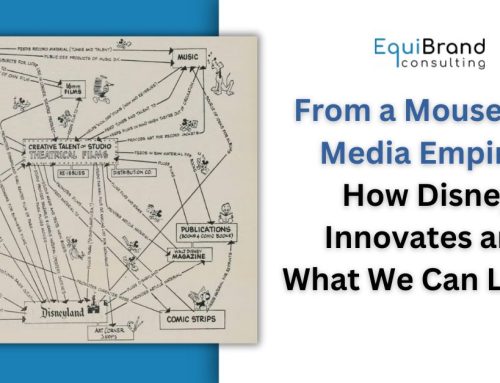 One of the more popular book series out today is the “For Dummies” set, published by John Wiley & Sons, Inc. From “Wireless Internet Access for Dummies” to “Raising Smart Kids for Dummies,” over 200 titles exist, across books, videos, software and online instruction. And while “Brand Equity Extension for Dummies” isn’t one of them (at least not yet), the series provides one example of how to extend a company’s brand to drive profitable growth.
One of the more popular book series out today is the “For Dummies” set, published by John Wiley & Sons, Inc. From “Wireless Internet Access for Dummies” to “Raising Smart Kids for Dummies,” over 200 titles exist, across books, videos, software and online instruction. And while “Brand Equity Extension for Dummies” isn’t one of them (at least not yet), the series provides one example of how to extend a company’s brand to drive profitable growth.
What is a Brand Equity Extension?
Brand equity extension is a means for companies to define and enter new and attractive businesses with existing brands. It is based on the premise that brands are valuable assets that can and should be strategically and selectively extended to:
- Strengthen and build the brand franchise
- Enhance the chance of success of new business development
- Reduce the cost of new business development
The benefits of brand leverage vs. new brand creation include immediate awareness, trust/comfort, accelerated trial, competitive insulation, distribution leverage, margin enhancement, and spending efficiencies.
Brand Equity Extension Examples
There are countless examples of brands that have been effectively leveraged into new categories. Take Arm & Hammer. From its long brand heritage in baking soda, significant other businesses have emerged – from toothpaste to air freshener to laundry detergent. Each product builds upon the equities of the parent brand – clean, fresh, good value – while strengthening overall equity. Other examples:
 Brands can be highly elastic – the key is not to violate the inherent “essence” of the brand. The reason the “For Dummies” brand extension has been so successful is that the core benefits the brand offers – a simplified way to learn complex things is maintained in each new title, across each new medium and format.
Brands can be highly elastic – the key is not to violate the inherent “essence” of the brand. The reason the “For Dummies” brand extension has been so successful is that the core benefits the brand offers – a simplified way to learn complex things is maintained in each new title, across each new medium and format.
Of course, brands can be stretched too far, risking brand equity erosion, as in the case of Levi’s shoes or Clorox laundry detergent. With brand equity extension, each brand and category needs to be carefully studied, addressing key issues through a structured approach.
Brand Extension Issues to Consider Brand equity extension needs to consider three broad issues:
- Brand fit: What are the core and extended associations (e.g., attributes and benefits) of the parent brand, and are those associations meaningful in the new categories being considered?
- Attractive propositions: Can a relevant, differentiated, and sustainable new product or service offering be developed within given time and resource requirements?
- Attractive categories: What are the size, growth, and competitive intensity of the new category? Can core competencies be leveraged in a meaningful way?
Brand Extension Approach
The following process steps should be undertaken in assessing brand equity attractiveness:
- Assess and confirm a brand’s equity and potential frame of reference
- Establish or clarify the brand vision
- Inventory and assess high potential growth categories, including an internal and external innovation audit
- Prioritize high potential extension opportunities
- Develop specific branded propositions within these areas of opportunities
- Develop an entry strategy and plan, including make vs. buy decisions and portfolio management guidelines
Sometimes the fear of cannibalization can get in the way of extension acceptance, though significant incremental profitable businesses are just a brand extension away.
For more information on Brand Equity Extension, please contact EquiBrand.



















Follow EquiBrand